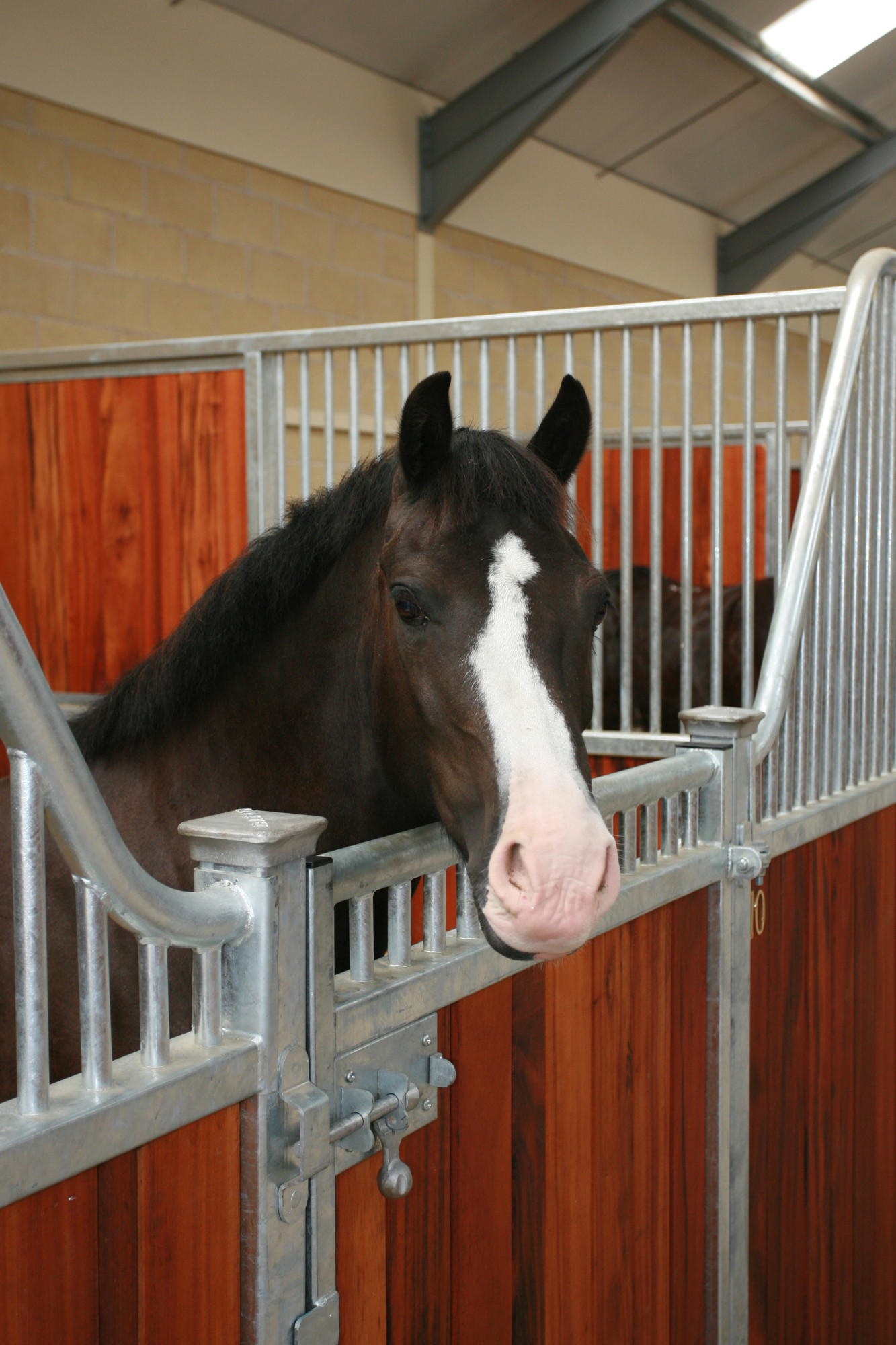
Horse livery
Keeping your horse at a livery yard can be a good option for some horse owners.
Renting grazing or having land at home is not an option for most horse owners. Instead, most people keep their horses at a livery yard. Livery yards can provide a variety of services in varying levels. This ranges from the simple renting of a stable and/or grazing space, generally known as DIY livery, to the total full time care of your horse, generally known as full livery.
The advantages of keeping a horse at a livery yard include:
- having access to shared facilities (such as a school or indoor arena)
- companionship for your horse
- the company and support of other horse owners on site
- extra security and vigilance
- assistance in caring for your horse if needed
There are some disadvantages of keeping your horse at a livery yard:
- They can be expensive (depending on the type of livery, monthly costs can range from £80 to £1,000)
- You may feel restricted by yard rules or management
- You may spend less time with your horse depending on the type of livery you have chosen
Types of horse livery
DIY livery
DIY livery is where grazing and a stable or shelter are rented, but you keep all responsibility for looking after your horse. This is ideal for people who have the time to look after their horse by themselves, but may want the mutual support between owners that can be found on a livery yard.
Grass livery
Grass livery is when your horse lives out at grass. While grass livery does not usually provide other services, the yard owner or staff may help you with daily checks of your horse. This type of livery is usually one of the most affordable.
Grass livery should also offer adequate shelter and suitable grazing for your horse. It’s worth checking if there would be use of a stable in an emergency, suitable companionship for your horse and on-site security.
If your horse is on grass livery, you'll need to consider the seasonal changes throughout the year. Grazing may need to be restricted in summer depending on your horse's weight and condition. On the other hand, they may need supplementary hay or hard feed in winter.
Assisted livery or part livery
Assisted livery or part livery is useful for busy owners who do not have the time to provide a consistent routine for their horse. It allows them to spend as much time handling and riding their horse as they wish, rather than carrying out stable duties.
These types of livery yards can help with the daily care and maintenance of your horse (such as feeding, mucking out, turning out, bringing in or exercise) depending on your needs and the services they offer.
Full livery
Full livery provides all care, exercise and necessary tasks on your behalf. Full livery can be standard care or tailored to individual needs, such as competition livery or backing and schooling livery.
This is usually the most expensive type of livery. You may also spend less time with your horse since all stable duties and exercise are taken care of.
Working livery
Working livery services are often offered at riding schools or equine colleges. The cost of keeping your horse is offset by them being used in riding lessons or for practical stable management sessions. This livery type needs careful consideration to ensure it's suitable for your horse. You should also consider whether it would limit your own use of your horse.
Retirement livery
Retirement livery cares for veteran horses or those who are no longer ridden, either due to age or health conditions. The level of service varies but they often take care of care all responsibilities on your behalf.
Retirement livery usually offers 24/7 grazing throughout summer with stabling options when necessary.
Choosing the right livery yard
If you've decided to keep your horse on a livery yard, you'll need to carefully consider which yard you choose. The closest or most luxurious yard may not be best suited to you and your horse's needs.
The British Horse Society operates an approval scheme which provides horse owners with a useful guide when choosing the right facilities. You can also use their livery yard directory to find a BHS-approved livery yard.
You should visit all prospective yards in person and discuss your needs with the yard owner or manager. When visiting the yard, look out for:
- a comprehensive livery contract
- biosecurity measures (such as quarantining on arrival)
- opening hours
- how much turnout is available for the number of horses at the yard, throughout the year
- a targeted worming programme
- adequate stabling facilities, including the use of a stable in emergencies for grass liveries
- safe, well constructed and suitably maintained facilities and field fencing
- on-site security and safety procedures
- separate, suitable facilities and turn out for stallions if there are any on site
Remember that when visiting a yard in the summer, arrangements may look different in the winter. Ask about seasonal rules such as restrictions on turnout during the winter months or wet weather. Access to good grazing and socialisation with other horses year round is essential for your horses physical and mental well-being.
If you have children, you may also need to find out whether the livery yard is adults only. Some livery yards only allow owners over the age of 16.
Page details
Reviewed
• 6 October 2023
Next review
• 6 October 2026






